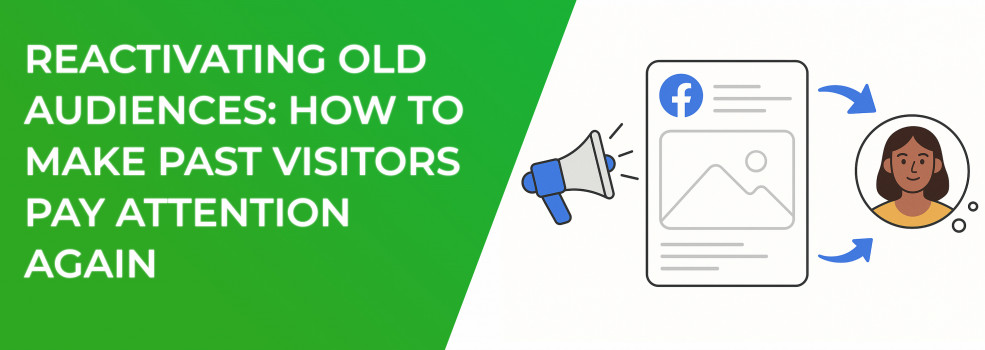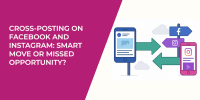Remember the first time your ad-fresh website traffic lit up Meta Business Manager? Click-throughs soared, the pixel fired nonstop, and sales notifications popped like popcorn. Fast-forward a few months and that rush can fade; the same prospects scroll past your creatives, CPMs creep up, and those warm-audience campaigns feel room-temperature at best.
The good news: these visitors already know you. With the right Facebook ad optimization strategy you can turn yesterday’s lukewarm traffic into tomorrow’s buyers, often faster and cheaper than prospecting for total strangers. The guide below shows you how.
1. Why Warm Audiences Go Cold
Every high-performing campaign eventually suffers from creative fatigue, rising competition, or simple forgetfulness. Algorithms notice the slip in engagement and throttle delivery, especially on Audience Network placements where relevance is king. Before you pour money into prospecting, give your current Facebook ad audience a quick health check:
-
Ad frequency – Is the same creative showing more than 6–8 impressions per person?
-
Offer relevance – Has your product line or pricing changed since that audience last visited?
-
Pixel events – Are purchases, add-to-carts, or leads still firing, or did tracking break?
Pinpointing the culprit tells you whether you need fresh storytelling, tighter segmentation, or both.
2. Unearth Your Warm Audience Inside Ads Manager
One of the fastest revival tactics is digging into Facebook Ads Custom Audiences. Filter for people who have shown intent in the past, then decide which pocket to tackle first. New to building those lists? Follow our step-by-step tutorial on how to set up Facebook retargeting before you proceed.
Remember: you’re not trying to reach everyone, you’re hunting for the users who are already halfway sold.
If your list feels stale, tighten the time window from 180 to 45 days. Cutting out cold prospects lets Meta focus on visitors whose memory of your brand is still fresh.
3. Segment Before You Speak
Blanket messaging rarely sparks the “Oh right, I loved this store” reaction. Split your target audience into intent-based groups:
-
Checkout abandoners – Mirror the exact product they viewed, then sweeten the deal with free shipping that expires tonight.
-
Content readers – Visitors who consumed educational posts often need more value before a pitch. Share a how-to PDF or invite them to a webinar.
-
Lookalike audience built on purchasers – Scale to cold users who resemble your best buyers, but ground creative in reviews so trust forms quickly.
Well-defined segments feed Meta’s machine-learning system stronger signals, lowering CPM and boosting conversion rate over time.
Still deciding whether to lean harder on lookalikes or stick with first-party data? This comparison of custom vs lookalike audiences can help you choose.
4. Refresh Creative Without Losing Familiarity
A dormant viewer needs a jolt—just not whiplash. Try this three-step refresh:
-
Pattern interrupt – Replace static images with a 3-second GIF or a Reels-style hook.
-
New angle, same promise – Highlight a first-purchase discount, upgraded feature, or seasonal bundle.
-
User-generated proof – Swap brand voice for influencer or customer testimonials so the story feels fresh.
Refreshing your creative doesn't mean rebranding, it means updating the delivery.
Keep your logo, color palette, and typography consistent so returning visitors recognize you instantly.
5. Control Spend With Advantage Campaign Budget
If you have access to the newer Advantage Plus Audience feature, test it alongside manual retargeting sets; Meta’s AI can surface hidden clusters of high-intent users that manual filters miss.
Nothing drains money faster than overserving revival ads to people who have already converted. Switching to Advantage Campaign Budget (ACB), often called campaign budget optimization, lets Meta reallocate dollars automatically toward ad sets that still convert. Start with a conservative daily cap, watch performance for 48 hours, then scale gradually. For advanced budgeting tactics that keep ROAS steady as you grow, see our guide on optimizing Advantage Campaign Budget for scalable Facebook ads.
6. Nail the Optimal Frequency
Striking the right balance between visibility and fatigue is crucial. In most ecommerce niches, conversions peak around 2–4 impressions per user per week. Use delivery insights to track:
-
If ROAS drops while frequency climbs, refresh creative or shorten the retargeting window.
-
If CTR remains healthy even at higher frequency, the message still resonates — let it ride.
Testing small budget increments is safer than massive jumps, especially when working with warm audiences that can saturate quickly. Need a hands-on walkthrough? Read how frequency capping helps beat Facebook ad fatigue without suppressing conversions.
7. Re-Measure, Re-Pixel, Repeat
Before scaling any winning ad set, double-check your technical foundation:
-
Facebook Pixel – Use the Chrome helper to verify events in real time.
-
UTM hygiene – Tag every revival ad so analytics platforms attribute revenue correctly.
-
Creative-fatigue logs – Record each asset’s launch date and plan swaps at day 14 unless data says otherwise.
Use this repeatable process every quarter to revive and convert old traffic efficiently.
Consistent measurement makes every iteration faster and keeps you ahead of fatigue curves. If conversions stay sluggish despite perfect tracking, run through the checklist in Facebook ads not converting: how to fix it.
Bringing It All Together
Past visitors already did the hardest work by clicking once. With smart segmentation, engaging creative, and data-driven Facebook ad optimization you can remind them why they liked you in the first place, often at a fraction of the cost required to attract cold traffic.
Cycle through this framework each quarter: audit, segment, refresh, measure, and scale. Implement even two or three of these steps and you’ll watch dormant audiences turn back into profitable streams, proving that yesterday’s traffic still holds plenty of tomorrow’s revenue.

